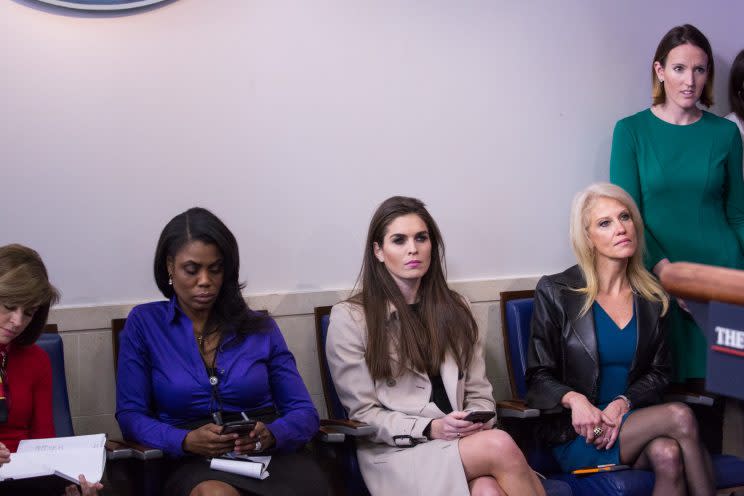Trump Likes Female Employees to ‘Dress Like Women,’ New Report Says

A report from veteran political journalist Mike Allen says that the 45th president of the United States has very specific opinions about how his employees, both male and female, should dress at work.
Allen’s new website, Axios, say anonymous sources close to Donald Trump shared that the president prefers both men and women who work for him to look and dress a certain way.
For men, this means projecting a “strong” demeanor, and wearing solid colors and wide, traditional ties. “You’re always supposed to wear a tie,” said a source — ideally from the Donald J. Trump brand or Armani, but Brooks Brothers will do, too.
When it comes to women, though, “Trump likes the women who work for him “to dress like women,” a source who worked on Trump’s campaign reportedly told Allen. “Even if you’re in jeans, you need to look neat and orderly. We hear that women who worked in Trump’s campaign field offices — folks who spend more time knocking on doors than attending glitzy events — felt pressure to wear dresses to impress Trump.”

It’s certainly a situation in which many women — and men — find themselves: a workplace where unofficial standards are subtly enforced in addition to an official dress code. It’s not always easy to navigate all the wrinkles.
And so we asked an expert about whether an implicit workplace dress code is OK — and what to do if you find yourself in an environment where you feel pressured to dress and appear in a certain way.
Michelle Feiner, the founder of Emissaries, a U.S. recruiting agency, explains that when it comes to dress in the workplace, employees cannot expect things to be black and white.
“Employer dress-code policies cannot legally include discriminatory requirements. Yet even when there is no dress code, there can be unofficial expectations in professional environments,” Feiner says.
For example, in 2015, the Supreme Court found Abercrombie & Fitch guilty of discrimination for not hiring a Muslim woman who wore a hijab, after the apparel company argued that head coverings and hats did not comply with its employee dress code.
But not all workplace standards of dress are discriminatory — and not all dynamics created by office culture are always interpreted by all employees the same way. As a result, Feiner explains, some, well, interesting conversations can result.
“I’ve worked in environments wherein if you didn’t wear heels, someone would ask if you broke your foot. I’ve also worked in environments wherein if you dressed up, someone would ask if you’re interviewing or have a date after work. When I was pregnant, I was fascinated many felt so comfortable commenting on my changing body. Opinions … everybody has one!” Feiner notes.
“Most people in the workplace,” she adds, “don’t mean any harm, so I just smile and change the subject. But if an employer or co-worker makes a discriminatory comment, you should certainly report the facts to HR.”
Read More:
A Size 20 Shopper’s Scathing Open Letter to Victoria’s Secret
Robert De Niro’s Trick for Taking Great Pictures
Meet Tom Brady’s Cutest Fan Club
Follow us on Instagram, Facebook, and Pinterest for nonstop inspiration delivered fresh to your feed, every day.


